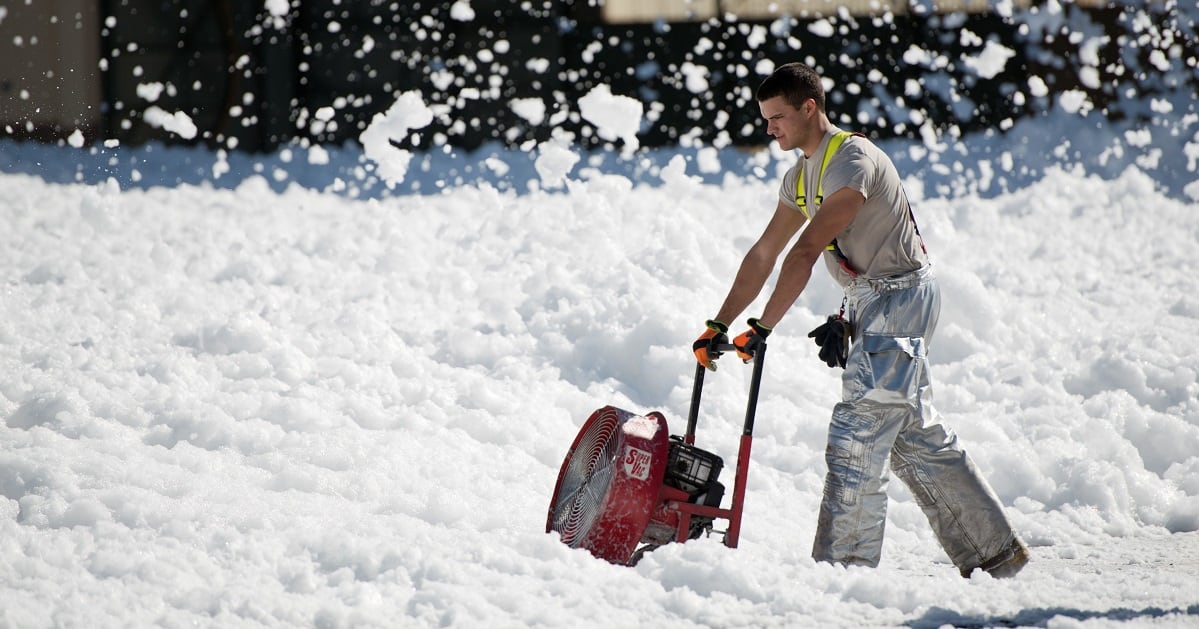As a Pentagon task force looks into unsafe drinking water on its installations, a new list of Army posts has been added to the roster of bases where per- and polyfluoroalkyl substances have been found in ground water as recently as this year.
Ninety active Army, Army Reserve and Army National Guard posts are on the list, obtained by the Environmental Working Group by Freedom of Information Act request, the findings of which were posted to the organization’s site late Tuesday night. The Army says that despite the confirmed presence of PFAS in the drinking water, no one is taking in unsafe levels of the chemicals, because their filtered water complies with Environmental Protection Agency guidelines.
Still, the EWG remains concerned.
“These results are alarming, because they show that PFAS contamination of the water provided to our soldiers is nationwide and exposes them to a number of types of PFAS,” EWG senior scientist Dave Andrews said in a release. “Because many PFAS chemicals build up in the body, even very low concentrations in drinking water can increase the risks of serious health problems. What’s more, the lack of regular monitoring suggests that military personnel could have been drinking water with even higher levels of PFAS in the past.”
In their response to the FOIA request, the Army said that it has tested drinking water throughout its installations and made moves to filter it and keep it under the EPA’s prescribed “lifetime healthy advisory” limit, which is 70 parts-per-trillion for perfluorooctanesulfonic acid and perfluorooctanoic acid, two types of PFAS.
“There are currently no Army personnel or families drinking water with levels of PFOS/PFOA above the LHA,” Army Department senior counsel Paul DeAgostino wrote.
The new list brings number of documented contaminated bases to 297, 108 of which are Army posts. Fort Leavenworth, Kansas, sits at the top of the the Army’s list, with 10 different types of PFAS totaling 4,022 parts per trillion, according to Army data.
The no. 2 and 3 most-contaminated installations are the Guard’s Joint Forces Training Base in Los Alamitos, California, and Belmont Armory, Michigan.
Seventy-three on the list are Guard facilities, including armories, readiness centers and training areas. Of the hundreds of bases known to be contaminated, the Defense Department was required by the EPA to test about 70 following a 2012 rule on contamination monitoring.
After the EPA issued more guidance in 2016, including the 70 ppt rule, testing and monitoring expanded, according to the Army’s response to the FOIA request.
Exposure to the chemicals ― found in firefighting foam used not only in vehicle or aircraft incidents on military bases, but in numerous training drills over decades ― has been linked to cancer and other health issues.
Though the Army is following EPA regulations, according to the EWG, their 70 ppt guideline is “70 times higher than the 1 ppt safe level found by some independent studies and endorsed by EWG,” according to the organization’s release. “Some states have set limits ranging from 11 ppt to 20 ppt.”
Further, the EWG argued that the Pentagon’s pledge to filter tap water on bases is not good enough, as the effort doesn’t address the contamination itself.
RELATED

“The Pentagon has cited EPA’s failure to designate PFAS as ‘hazardous substances’ under the federal Superfund law as one reason for its refusal to clean up PFAS contamination,” according to the release.
Lawmakers are making moves to change that. In July, the both the House and Senate’s versions of the next National Defense Authorization Act included a provision designating PFAS as hazardous, banning the use of fluorinated firefighting foam. The House’s would also ban the use of PFAS in packaging for meals ready-to-eat.
However, according to a July statement from the White House, President Trump planned to veto the NDAA if the PFAS bills stayed as proposed.
“Congress should not wait for President Trump’s EPA to act,” Scott Faber, EWG’s senior vice president for government affairs, said in the release. “The final NDAA must quickly end the Defense Department’s use of PFAS in firefighting foam and food packaging, and kick-start efforts to clean up legacy PFAS pollution.”
In the meantime, DoD has begun to research alternatives to its current firefighting foam products. According to a September release, the department is taking proposals ― the deadline is Sept. 12 ― with an eye toward funding one in fiscal year 2020.
Meghann Myers is the Pentagon bureau chief at Military Times. She covers operations, policy, personnel, leadership and other issues affecting service members.




